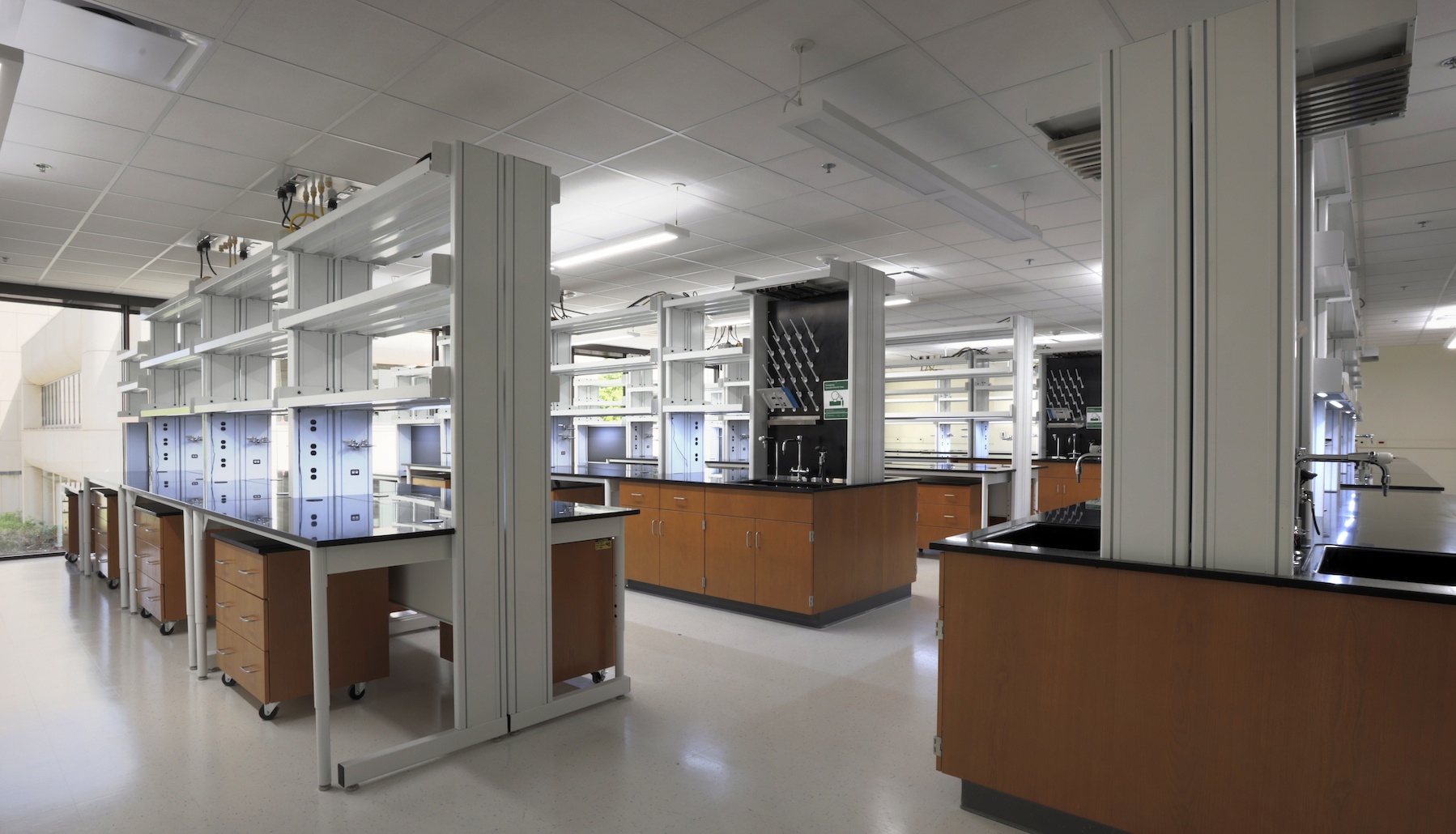How long can medical research afford to wait?
That’s a question we often pose at the Oklahoma Medical Research Foundation. Because if you or a loved one is suffering from a life-threatening disease, the answer is pretty obvious. There’s not a moment to spare.
But, nowadays, every basic premise comes with an asterisk. As in, *except in times of pandemic.
At the close of business Friday, like so many employers, OMRF basically shut our doors. Technically, we are still open, but we have whittled our onsite workforce down to a skeleton crew.
In real time, the process has been dizzying. In 10 days, we went from a fully staffed campus of almost 500 scientists and staff to a virtual ghost town of fewer than 100 employees onsite.
But in coronavirus time, where our reality can change in the space of a few hours, that transition actually took place pretty gradually.
A lurking specter
We issued our first cautionary email to OMRF employees in early February, restricting all non-essential business travel to China. In the ensuing month, we slowly stepped up precautions, widening restrictions to include other Asian countries and Italy.
As scientists, many of us recognized the potential threat the virus posed. It spread easily. Our bodies lacked immunity to this new pestilence. And though the wheels of medical research had begun to turn, we recognized we were at best many months – and, more likely, at least a year – from devising effective treatments and a vaccine.
Intellectual recognition is one thing. Emotional acceptance is another.
The virus crept out of Asia into Europe, finally making North American landfall on the West Coast. Even then, it lurked only on the edge of our collective consciousness, a distant raincloud that might soak us. But how many rainclouds, said a hopeful, little voice inside even the most scientific head, just blow away, leaving nary a drop?
Thinning the ranks
The sense that COVID-19 was really here didn’t sink in until that fateful Thunder game versus the Utah Jazz that wasn’t.
By that Friday, we’d issued a directive to supervisors to move everyone they could offsite. We shuttered our café and our fitness center.
Go home, we said in every way possible. Do your work there. Analyze the results of a past experiment and write up the findings to publish in a journal. Develop a clever new line of scientific inquiry.
Be safe.
In the ensuing week, we did see a dip in the number of unique badge swipes (which is how we count heads at OMRF) Still, our ranks hadn’t thinned as much as we would have liked.
That, of course, was completely understandable.
Medical research is a hands-on profession. To study cancer and lupus and Alzheimer’s, you need to gather data. You must run experiments. And that can’t happen in a living room.
You can’t perform a virtual DNA sequence of a tissue sample. And if you want to understand whether a compound stops the growth of brain cancers, computer modeling is not enough. You need the real thing.
Down to bare bones
Like so many professions, scientists believe deeply in what they do. Indeed, it’s something of a misnomer to call science a profession. It’s really more of a calling.
We who practice this quasi-religion are deeply committed to the process of intellectual inquiry, the quest for knowledge. We spend our careers in pursuit of the indescribable joy that comes, if we’re lucky, with discovering something no one before has ever known.
We’re also acutely aware that our pursuits are much more than abstract searches. Our projects range across many disciplines, but they all share a single goal: the alleviation of human suffering.
When we told our researchers to pack up, they did all they could to stay. Heart disease won’t stop killing people just because coronavirus is out there, they said. So, we need to keep our work going. People’s lives depend on it.
Finally, though, the threat of COVID-19 in our community became too great. We had to protect our employees, their families and everyone else in Oklahoma City.
We ordered everyone except the staff whose presence we deemed absolutely essential onsite to go home. That left our skeleton crew, those who would keep the heart of OMRF beating while the pandemic runs its course.
So, now we wait.
Springing back to life
In the meantime, OMRF’s dedicated comparative medicine team will come in each day on staggered shifts, caring for and feeding the experimental mice and fish. Our facilities and biomedical shop crews will make sure the freezers filled with biological samples stay cold and all mechanical systems continue to function. Clinical staff will treat patients suffering from life-threatening autoimmune diseases.
Laboratory technicians will keep cell lines alive. They’ll keep banking new tissue samples as they arrive. And the researchers at home will be plotting out new approaches to take down the diseases they’ve been wrestling with their entire careers.
When COVID-19 recedes, we’ll be ready. As quickly as we put our labs to sleep, we’ll wake them up. Armed with new ideas and a renewed sense of purpose, we’ll pick up right where we left off.
We owe that to the people struggling with life-threatening diseases. They can’t afford to wait, and neither can we.



